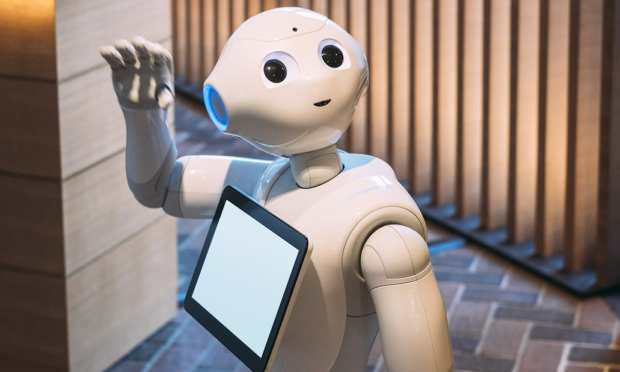SoftBank Puts ‘Pepper’ Robot On Hold As Bot Biz Does Some Soul-Searching

In its latest move to redefine the firm’s relationship to robotics, SoftBank announced that it has halted production on its Pepper robot. It is the firm’s second major move away from robotics of late — last week, the company finalized its deal to sell robotics firm Boston Dynamics to Hyundai for $1.1 billion.
The discontinuation of Pepper, however, is eye-catching, as the service robot was more than just a project backed by SoftBank — at various points, Pepper served as something of an unofficial mascot for the company. The choice to pull the plug now, according to reports, is an indication that SoftBank is rethinking its role in robotics entirely — and moving away from building robotic companions and assistants for consumers in favor of more business-centric, practical offerings.
The Rise and Fall of Pepper
Pepper was initially advertised to consumers as a robot designed to understand and appropriately react to human emotions. However, Pepper never quite lived up to that billing — although most consumers did find its pre-programmed responses charming.
But what it lacked in functionality it made up for in promotional appearances at conferences and events. Pepper visited the U.K. Parliament in 2018 to answer questions about the use of artificial intelligence (AI) in the classroom, it worked as a customer engagement robot at HSBC’s flagship New York branch, and a group of robots even served as pandemic-era cheerleaders at baseball games last year.
But for all the press it drew when it showed up, Pepper never really caught on as a commercial product. The four-foot, 62-pound robot was mainly used as a research and educational tool for schools, colleges and universities, due in large part to its steep price tag ($1,790) and lack of functionality. According to Reuters, only 27,000 units were ever made.
And not everyone is sad to see it go. Robotics expert Prof Noel Sharkey told the BBC that Pepper, and its touted ability to read human emotions, did more harm than good in terms of advancing robotics usage. “Pepper did a lot to harm genuine robotics research by giving an often false impression of a bright, cognitive being that could hold conversations,” he said. “It was mostly remote-controlled with a human conversing through its speakers. Deceiving the public in this way is dangerous and gives the wrong impression of the capabilities of AI in the real world.”
The Rise of Practical Robotics
The passing of Pepper points to a bigger trend that PYMNTS has covered before: Consumers aren’t all that into owning robots. Sure, everyone wants a robot butler in theory — but in practice, they don’t’ buy them. Brands ranging from startups like Anki and Jibo to well-established players like LG have all premiered robots designed to interact with humans to great fanfare over the last few years. But all have since been discontinued because they simply didn’t sell — it turned out they didn’t deliver much in the way of usefulness, and consumers also occasionally reported finding them creepy.
But though consumer use for robot companions might be minimal, the demand for robots in other contexts continues to increase. Hyundai, for example, wants to redesign how cars move — it bought Boston Dynamics last week because its research can combine with various “walking car” concepts that the car company’s New Horizon Studios is currently developing.
“With New Horizon Studios, the mandate is reimagining what you can do when you combine robotics with traditional wheeled locomotion, like walking robots and walking vehicles,” Hyundai’s Ernestine Fu told TechCrunch. “Obviously, the technology that [Boston Dynamics] has put together plays a key role in enabling those sorts of concepts to come to life.”
Instacart has rolled out a plan to replace human gig shoppers with robots — part of a long-term strategy to cut costs and put its relationship with supermarket chains on a sustainable footing. That plan has been delayed at various points over the last year acccording to reports, which in turn has slowed the firm’s long-expected public offering.
But, as a spokesperson told Bloomberg, the push toward robotics and automation rolls on: “[The company is ] committed to supporting our brick-and-mortar partners and continuing to invest in and explore new tools and technologies that support the needs of their customers and further enable their businesses to grow and scale over the long term.”
Robotics is coming, though perhaps not in the form of robot companions pitched to consumers. As CEO Scott Gravelle of Attabotics told PYMNTS, consumers are driving the shift to automated warehousing and robot-assisted supply chains is coming – because without it, there’s no reasonable way for eCommerce merchants to keep up with today’s rapidly digitizing economy.
“We know the robotics future’s coming because we can see it in consumer behavior,” he said.
Even if they aren’t buying the robots directly.
